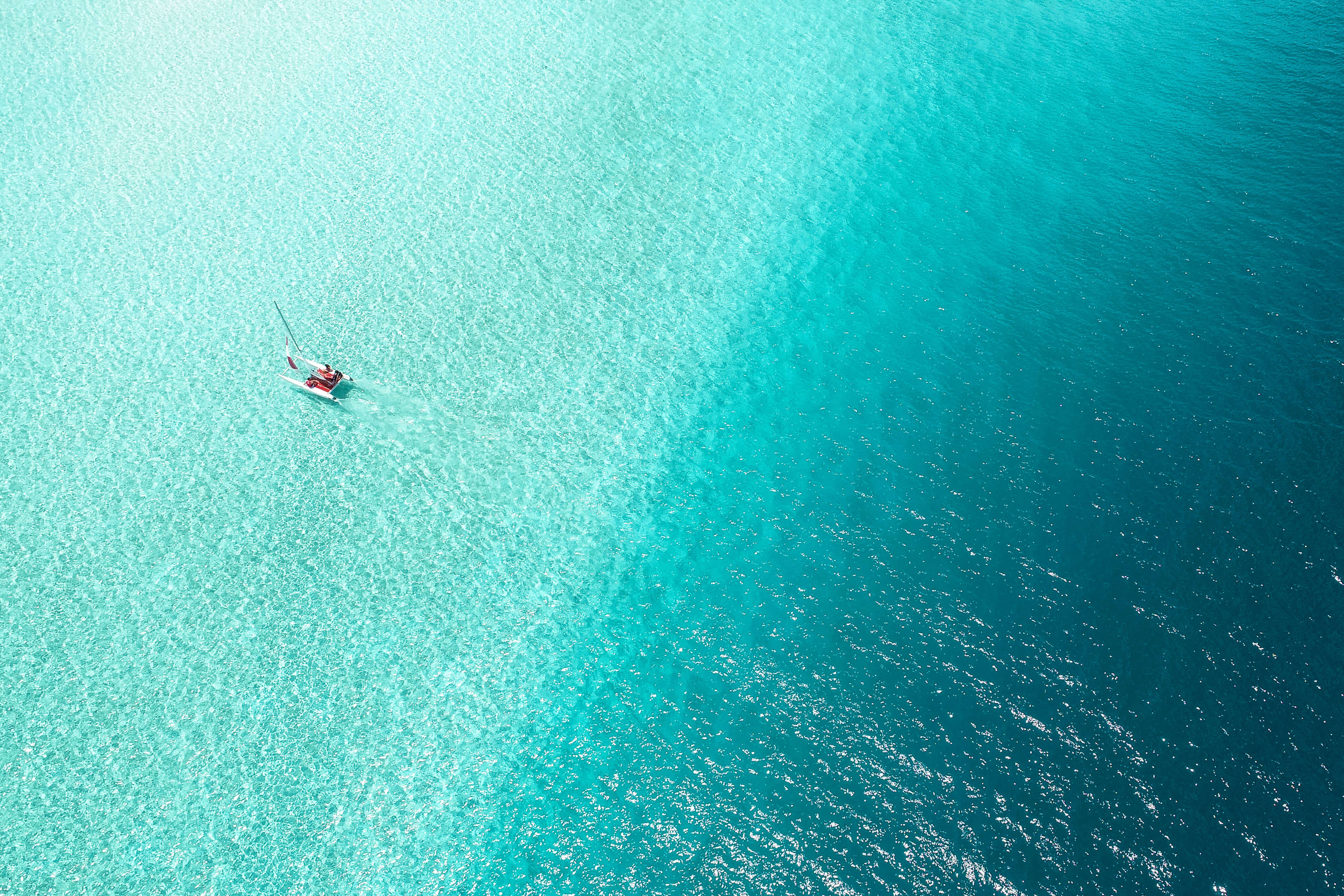1/1 Oops. Incorrect.
0%
0pts Earned
0/1correct
21/21
What country is the farthest away from the ocean?
There are 49 landlocked countries in the world, and then there’s Kyrgyzstan. The Central Asian country is located the farthest from any ocean — it’s 1,620 miles from the nearest coastline on the Indian Ocean. Although Kyrgyzstan is the farthest country from the sea, it isn’t home to the exact point on the globe farthest away from any coastline. That honor belongs to the Dzungarian Basin in northwest China.
Source: Central Asia RallyMongolia
21%
Kyrgyzstan
35%
Tajikistan
16%
Nepal
29%
20/21
What is the only ocean where blue whales do NOT live?
Blue whales are found in waters all over the world, but they don't venture north to the Arctic Ocean, which is too cold for them to live. The Southern Ocean, though also cold, isn't at such a polar extreme due to the landmass of Antarctica at the globe's most southerly point. The whales, which are the largest animals on Earth, can grow to be 110 feet long and 330,000 pounds.
Source: NOAAArctic Ocean
40%
Southern Ocean
22%
Indian Ocean
31%
Atlantic Ocean
7%
19/21
Where is the Atlantic Ocean's deepest point?
About 75 miles north of Puerto Rico lies the Puerto Rico Trench, a chasm in the Atlantic Ocean that is about 1,090 miles long and 60 miles wide. At its deepest point, the Milwaukee Depth, the Puerto Rico Trench is 27,493 feet below water, making it the deepest point in the Atlantic Ocean. Only one person, explorer Victor Vescovo, has been to the floor of the Milwaukee Depth.
Source: BritannicaKuril-Kamchatka Trench
13%
Kermadec Trench
15%
Peru-Chile Trench
14%
Puerto Rico Trench
58%
18/21
What is the study of ocean depth called?
From the ancient Greek words meaning "depth" and "measure" comes the English word for the study of ocean depth: bathymetry. Bathymetry illustrates the land that lies underwater, similar to the way topographic maps represent the three-dimensional features of overland terrain. Bathymetric models are how we know where the deepest parts of our oceans can be found.
Source: NOAASubtopogrpahy
27%
Bathymetry
34%
Hydrogeology
19%
Depthometry
19%
17/21
What is unusual about the Atlantic Ocean's Sargasso Sea?
The Sargasso Sea is the world's only sea without a land border. The vast patch of ocean is instead defined only by ocean currents, and lies within the Northern Atlantic Subtropical Gyre. Currents including the Gulf Stream establish the sea's boundaries, and also keep its unique sargassum seaweed from spreading to the rest of the world's oceans.
Source: NOAAIt is fresh water
17%
It has no fish
8%
It is extremely shallow
11%
It doesn't border any land
64%
16/21
The Atlantic Ocean’s Denmark Strait is home to what unusual feature?
Yes, waterfalls do exist under the ocean’s surface. The Denmark Strait is not only home to the largest underwater waterfall, but also the largest waterfall found anywhere on the planet. The strait separates Iceland from Greenland, and it’s where warm water from the Irminger Sea meets the glacial water from the Nordic Seas. As a result, the warm water rises, while the denser cold water sinks, creating a powerful downward flow.
Source: NOAAAn underwater waterfall
56%
An underwater volcano
15%
A huge concentration of shipwrecks
19%
An underwater museum
9%
15/21
In what ocean is the Gulf Stream?
The Gulf Stream is an extremely long and powerful ocean current that brings warm water from the Gulf of Mexico across the Atlantic Ocean to northern Europe. The Gulf Stream is caused by circular currents and powerful winds called oceanic gyres, which keep the waters of the world's oceans constantly in motion. The stream has existed for millions of years, but humans first discovered it in the early 1500s.
Source: NOAA SciJinksPacific Ocean
16%
Atlantic Ocean
79%
Arctic Ocean
2%
Indian Ocean
2%
14/21
What giant ocean once surrounded the ancient supercontinent Pangea?
About 300 million years ago, Earth had one massive supercontinent called Pangea. Surrounding that was a giant superocean containing nearly all of the world's water, which was called Panthalassa. Since that time, the continents have shifted to their own separate places, and Panthalassa has been divided into the five oceans of today.
Source: Live ScienceUltima Thule
10%
Gondwana
22%
Panthalassa
62%
Tethys
5%
13/21
The deepest parts of the ocean are in what zone?
The depth of the ocean is categorized into five layers. The first is the Epipelagic Zone, or the Sunlight Zone, which extends about 600 feet below the water's surface, followed by the Mesopelagic or Twilight Zone. Then comes the Bathypelagic or Midnight Zone, and below that is the Abyssopelagic Zone, where most of the ocean floor is. Finally comes the Hadal Zone in ocean trenches — the deepest parts under the water.
Source: World AtlasHadal Zone
18%
Mesopelagic Zone
34%
Abyssopelagic Zone
36%
Epipelagic Zone
13%
12/21
Earth’s oceans provide 50%-80% of the world’s what?
Scientists estimate that 50% to 80% of the world’s oxygen comes from our oceans, thanks to its extensive collection of small, usually microscopic, organisms called phytoplankton. One type of phytoplankton, Prochlorococcus, is a tiny plant-like bacteria that alone is responsible for creating 20% of the ocean’s oxygen — more oxygen produced than all tropical rainforests combined.
Source: NOAAHydrogen
19%
Silicon
3%
Iron
1%
Oxygen
77%
11/21
Which of these record-breakers is found in an ocean?
Extending more than 40,000 miles around the Earth, the underwater Mid-Ocean Ridge is the planet's longest mountain chain. Rising along divergent plate boundaries between nearly every continent, the ridge can be subdivided into smaller ranges like the Mid-Atlantic Ridge and the East Pacific Rise, both of which have peaks that are found an average of 8,200 feet below the water's surface.
Source: NOAAWorld's largest statue
2%
World's oldest active volcano
32%
World's longest mountain range
59%
World's longest river
7%
10/21
The Arabian, Andaman, and Red Seas are all part of what ocean?
The world's oceans are subdivided into various marginal seas, and the Indian Ocean is no exception. It includes the Arabian Sea, which borders Iran and Pakistan to the north; the Andaman Sea, which borders Myanmar and Thailand; and the Red Sea, which lies between Africa and Asia. It also has the Timor Sea, the Persian Gulf, the Mozambique Channel, the Laccadive Sea, the Bay of Bengal, and more.
Source: World AtlasSouthern Ocean
6%
Indian Ocean
87%
Arctic Ocean
1%
Atlantic Ocean
7%
9/21
The "Coral Triangle" is located in which of the world’s oceans?
A lot less ominous than the Bermuda Triangle, the Coral Triangle is located in the western Pacific Ocean and includes the waters of Indonesia, Malaysia, the Philippines, Timor Leste, Papua New Guinea, and the Solomon Islands. The region is named for the huge numbers of coral that call it home, including nearly 600 species of reef-building corals, or 75% of the world’s coral species.
Source: World Wildlife FundIndian
30%
Atlantic
9%
Arctic
1%
Pacific
60%
8/21
What causes the oceans' tides?
Ocean tides are created by the moon's gravity. As Earth rotates each day, the location of the moon relative to Earth also changes, which causes different parts of the ocean to rise or fall. Water that is closest to the moon gets pulled up ever so slightly, creating high tide. The sun's gravity also has an effect on the tides, though it is much less powerful.
Source: NOAAEarth's core
1%
Underwater earthquakes
2%
Evaporation
1%
The moon
97%
7/21
What is the saltiest ocean on Earth?
With average salinity approaching 37 grams per liter of water, the Atlantic Ocean is the saltiest of the world's oceans. While the reasons are not entirely understood, the ocean's saltiest regions occur where evaporation is highest. Also, trade winds carry the fresh water evaporated from the Atlantic across the Isthmus of Central America, adding fresh water to the Pacific and leaving the Atlantic with the salt.
Source: National Weather ServiceAtlantic Ocean
40%
Pacific Ocean
12%
Indian Ocean
33%
Southern Ocean
15%
6/21
The Strait of Magellan links which two oceans?
The Strait of Magellan is a channel of water at the tip of South America connecting the Atlantic and Pacific Oceans. The Strait is about 350 miles long and lies mostly in Chilean territory. The strait is named for Portuguese explorer Ferdinand Magellan, who in 1520 became the first European explorer to sail through the channel. Although it is less strategic for world trade since the opening of the Panama Canal in 1914, it remains in frequent use by Argentina and Chile.
Source: BritannicaIndian and Pacific
19%
Arctic and Atlantic
7%
Atlantic and Pacific
66%
Indian and Southern
8%
5/21
What is the name of the world's deepest ocean trench?
About 124 miles east of the Mariana Islands lies the Mariana Trench, which is not only the deepest point in the Pacific, but also the entire world. At the trench's deepest point, named Challenger Deep, the distance to the surface is nearly seven miles. If Mount Everest were dropped into the trench, it would be completely submerged with more than a mile to spare.
Source: Deep Sea ChallengePhilippine Trench
3%
Tonga Trench
6%
Mariana Trench
89%
Diamantina Trench
2%
4/21
What is the most common cause of ocean waves?
Most of the waves on the surface of the ocean are simply caused by wind. As wind blows across the water, the continual disturbance creates a wave crest, which can then travel along until it breaks on a coast or in the middle of nowhere. Waves can be caused by tides, currents, earthquakes, or even divers doing a cannonball, but most of the time they're just blowing in the wind.
Source: NOAAUnderwater earthquakes
4%
Currents
14%
Tides
46%
Wind
35%
3/21
How much of the Earth's surface is covered in ocean?
Approximately 71% of the surface of the Earth is ocean — an area covering more than 139 million square miles. Despite their overwhelming size and the massive impact the oceans have on human life, more than 80% of Earth's ocean territory remains unmapped, unobserved, and unexplored.
Source: National Geographic40%
6%
71%
81%
90%
11%
98%
1%
2/21
What is Earth’s largest ocean?
Covering more than 63 million square miles of Earth's surface, the Pacific Ocean is by far the largest body of water on the planet. It is also the deepest, and its ocean basin contains more than half of the free water on our planet. All of the world's continents could comfortably fit inside the Pacific basin, which is also the oldest ocean basin on Earth.
Source: NOAASouthern Ocean
2%
Atlantic Ocean
7%
Pacific Ocean
89%
Indian Ocean
2%
1/21
Which is NOT one of Earth's five oceans?
In 2021, National Geographic officially recognized the Southern Ocean — surrounding the continent of Antarctica — as its own body of water, bringing the number of oceans in the world to five. The other four world oceans include the Atlantic, Pacific, Indian, and Arctic Oceans. The Southern Ocean is the only ocean to encircle a continent and touch three other oceans.
Source: National GeographicIndian Ocean
4%
Southern Ocean
21%
Northern Ocean
68%
Arctic Ocean
7%
Play Quizzes By Category
Play A Trending Quiz
Trending, related and recent quizzes you may be interested in







